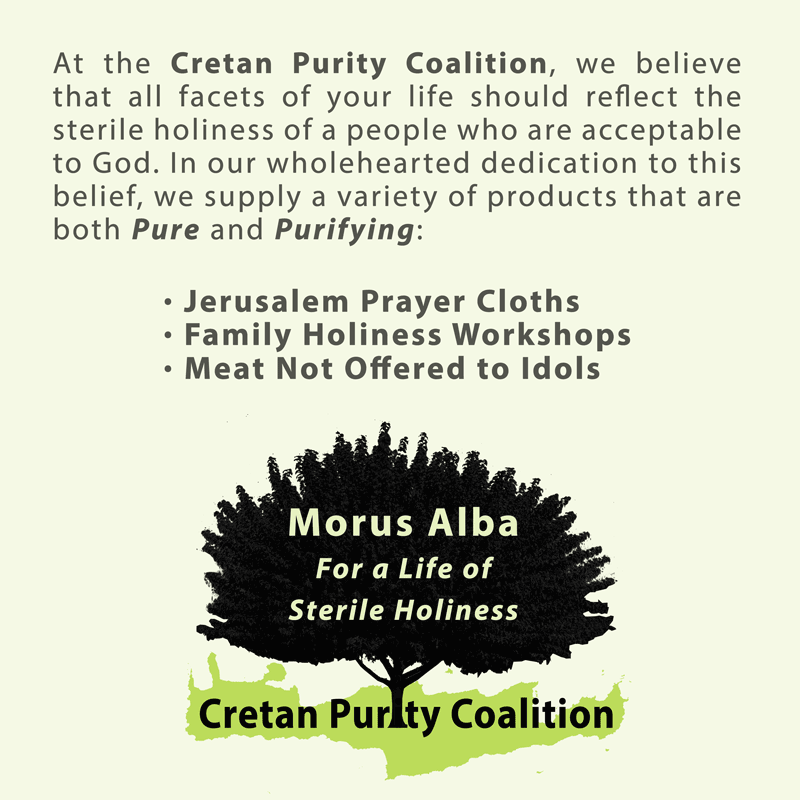
NOTE: This tongue-in-cheek illustration reflects how I’m pondering the book of Titus.
Since my pastor* has begun a series of sermons on Paul’s letter to Titus, I have been contemplating this book. One of the mysteries (to me) that most commentators (at least those I have read) skip right over is how the false teachers (1:10-16) were deriving “dishonest gain” from their teaching. Was this financial gain? If so, how?
Paul seems to contrast what they were “selling” to the fact that “To the pure all things are pure, but to the defiled and unbelieving, nothing is pure.” In the next chapter, Paul remarks that Jesus Christ “gave himself for us to redeem us from all lawlessness and to purify for himself a people for his own possession who are zealous for good works.” Purity—fruitful purity—was in view. It was anything BUT sterile holiness.
By the way, “Morus alba” is the scientific name for the Fruitless Mulberry. If you have ever stood under a FRUITING Mulberry in early summer, you know how messy they can be. The juicy red and black berries fall to the ground, making ugly splats. Birds eat the berries and then make colorful deposits on parked cars. I like to play around with why my imaginary Cretan Purity Coalition would use the non-messy “fruitless” variety of this tree in their logo….
*Any similarity to Sten-Erik Armitage’s Titus sermon series graphic was accidental (at least on a conscious level).
